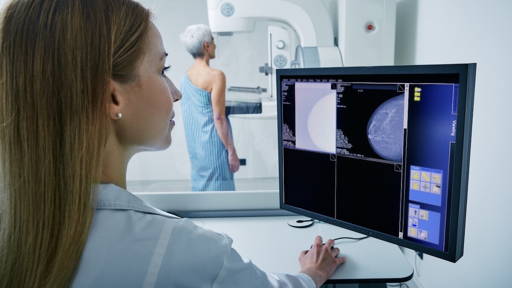The use of robot technology in hospital pharmacies offers new opportunities for more efficient, safe and sustainable chemotherapy preparation. In his PhD research, hospital pharmacist Tjerk Geersing investigated the added value of automated preparations compared to manual processes. His finding: robots such as the APOTECAchemo perform at least as well and provide advantages in terms of labour, costs and sustainability.
In 2017, the OLVG pharmacy was the first in the Benelux to be equipped with this innovative compounding robot. In clean rooms, these robots prepare sterile chemotherapy with great precision, essential for patient and staff safety. ‘Because the medication enters the bloodstream directly, absolute sterility is required. A robot meets this requirement at least as well as a human,’ Geersing states.
Efficiency and safety combined
The study shows that robotisation leads to accurate dosing, less medicine waste and a reduction in direct labour costs of up to 2.5 times. A hybrid approach - human and robot - also allows each employee to produce twice as much. The likelihood of human error also decreases as the process is largely automated. ‘Our calculations showed that with a combination of manual and robotised preparation, each employee can produce twice as much, while direct labour costs decrease by a factor of 2.5,’ says Geersing.
An additional benefit is sustainability. Robots utilise medicine vials more efficiently, saving an average of €45,000 per medicine annually. Less physical contact with hazardous substances also reduces the need for personal protective equipment.
Regulations and future prospects
The current guidelines of the Healthcare and Youth Inspectorate (IGJ) still focus on manual preparations. Together with an expert group, Geersing is working to update these regulations to better reflect the reality of automated processes.
Although robots cannot take over all preparations - complex or small volumes remain human work - Geersing sees a clear future for this technology. ‘If one in four Dutch people will soon have to work in healthcare, automation will help us keep the demand for care manageable. A compounding robot could then become the norm in every hospital pharmacy.’
Robotics in the pharmacy
Last year, at St Antonius Hospital, the Amico preparation robot was commissioned for accurately compounding chemotherapies. This gives pharmacy assistants more time for more complex tasks, while reducing the risk of exposure to hazardous substances. Amico works sustainably by reusing remnants from medicine bottles, leading to cost savings and reduced environmental impact. In addition, the medication robot also helps meet the growing demand for care and the shortage of pharmacy assistants.
Already in 2020, a robot was implemented in the Radboudumc pharmacy that alleviates the physically demanding work of employees by preparing elastomeric pumps. Due to the increased demand for these pumps, from a few per day to hundreds per week, the robot provides significant support, with for the heavy filling work. However, for tasks such as loading, weighing and scanning, human handling remains essential. The robot does ensure that employees are able to focus on other tasks.









